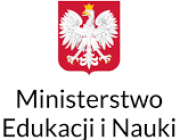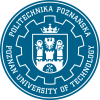
UHV STM LAB deals with the characterization of the properties of metallic and semiconducting surfaces with atomic resolution. We not only investigate samples in the form of single crystals or thin 2D layers or materials, but we also modify surfaces by depositing organic molecules or metal clusters on them and even produce two-dimensional structures ourselves. The use of STM enables local analysis of structural and electronic properties and physical effects on an atomic scale.
LOCATION: PIOTROWO Campus, HALL A21B, room F3
SCIENTIFIC EQUIPMENT:
Currently, our laboratory has three ultra-high vacuum (UHV) systems, the basic analytical tool of which is scanning tunneling microscopes (STM). The configuration of the systems enables innovative research into nano-systems with a wide range of applications.
The first system has an STM operating at room temperature (RT) conditions. Here we conduct preliminary research and introduce you to vacuum technology in practice.
The second system is equipped with a flow cryostat enabling testing in variable temperature (VT) conditions in the range from 4 K (LHe) or 73 K (LN) to RT. In addition to the STM, it is equipped with a low-energy electron diffractometer (LEED) coupled with an Auger electron spectrometer (AES). The preparation chamber has a wide range of preparation possibilities. It is equipped with basic devices for surface preparation in a vacuum (ion gun, heating stations), as well as for surfaces modification by deposition of molecules or metallic clusters.
The third system, currently under construction, is equipped with a closed-cycle cryostat and will enable low-temperature (LT) investigations at 4 K.
RESEARCH TOPICS:
The scientific work currently carried out by our team focuses on three main topics.
Characterization of structural, electronic, and magnetic properties of two-dimensional surface alloys containing rare earth metals and platinum, produced in situ on the surface of a platinum single crystal.
Characterization of electronic and structural properties of materials from the family of transition metal dichalcogenides (TMD).
Research on molecules of salophene derivatives aimed at applications in spintronics. Synthesis of molecular systems on the surface and characterization of their properties and interactions on substrates of different reactivity.
SCIENTIFIC PROJECTS:

![]() 0084/DIA/2014/43, Preparation, characterization and modification of graphene layers on monocrystalline metallic substrates
0084/DIA/2014/43, Preparation, characterization and modification of graphene layers on monocrystalline metallic substrates
![]() IUVENTUS+ IP2012 031772, Incorporation of molecular switches on semiconducting surfaces
IUVENTUS+ IP2012 031772, Incorporation of molecular switches on semiconducting surfaces
![]() KBN N202 169236, Local properties of semiconductor surface Si and Ge with defects induced by
KBN N202 169236, Local properties of semiconductor surface Si and Ge with defects induced by
adsorption of atoms and molecules
![]() PhD support grant N202 482739, Molecular switches on the example of isomerization of single azobenzene derivatives
PhD support grant N202 482739, Molecular switches on the example of isomerization of single azobenzene derivatives







